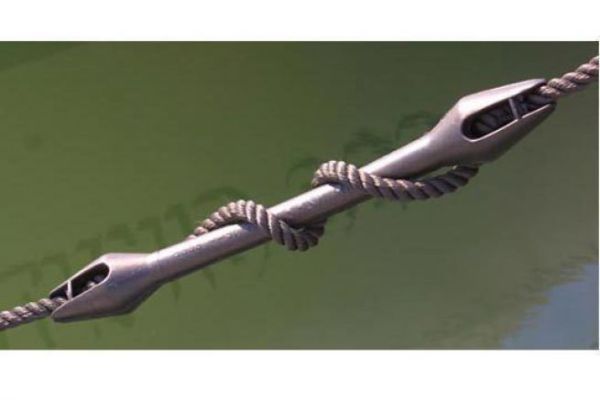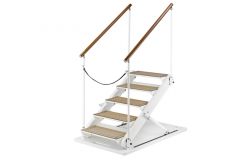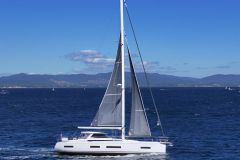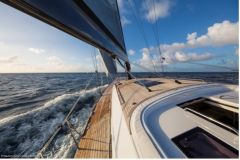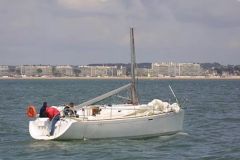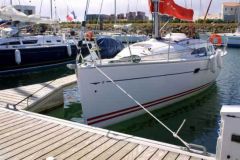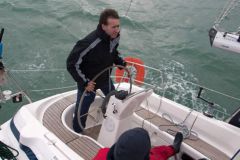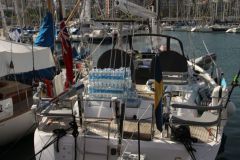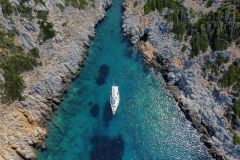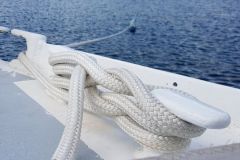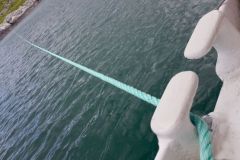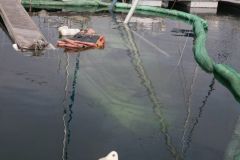I remember one night moored at the Fornells wharf in Menorca with the swell entering the bay. The boutoir blows were so strong I was afraid to tear the cleats off my boat! That night I wish I had shock absorbers on my mooring lines.
Installed on each mooring line, the shock absorber is there to attenuate the jolts of the sea. Because it's the swell that causes more damage than the wind. Even strong, this last tends the mooring line, but does not tire it (as long as one remains in the range of use of the rope and not close to its rupture...).
The shock absorbers presented here work at the port, at the quayside, but also at anchor to dampen the boat's traction on its anchor chain.
Polyester mooring lines
Before thinking shock absorber, it is necessary to start by being equipped with good mooring lines. For sailors, don't think about recycling your old halyards or sheet pieces as mooring lines. These are as stiff as justice and return nothing (especially for sheets or halyards, we look for ropes that offer very little elongation).
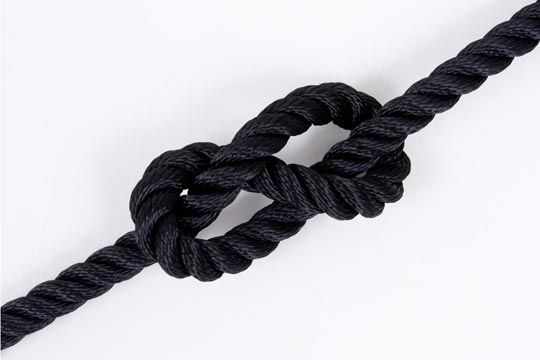
On the contrary, a mooring line must be flexible, elastic. Polyamide and Polyester are the two materials that offer the best elongation strength. Polyamide lengthens between 15 and 30%, but is not UV resistant (long-term curing phenomenon). Facing it, polyester lengthens less (from 10 to 15 %), but always remains flexible even after a long exposure to the sun.
The three strands remain king
The construction of the mooring line is also important for elasticity and flexibility. Thus the three-strand rope will be less flexible than the eight strands or braided mooring lines. Unfortunately, these high-end mooring lines can also cost three times the price of the first ones.
Which mooring damper to choose?
Metal or rubber mooring damper?
The mooring damper market is divided into 2 families. On one side metal springs, on the other rubber systems.
The tests I was able to carry out in the laboratory show an advantage for the springs even if the rubber does well. Each of the 2 families has its share of advantage and disadvantage.
Metal springs
Besides the quality of the steel used (steel, galvanized steel, stainless steel), the ratio between the diameter of the wire and that of the spring is important. A wider spring dampens more than a narrower model. Similarly for the wire, the diameter of the steel used, the larger it is, the more it absorbs.
The big problem with springs is ageing. Unprotected, they are quickly attacked by rust. Steel must therefore be protected.
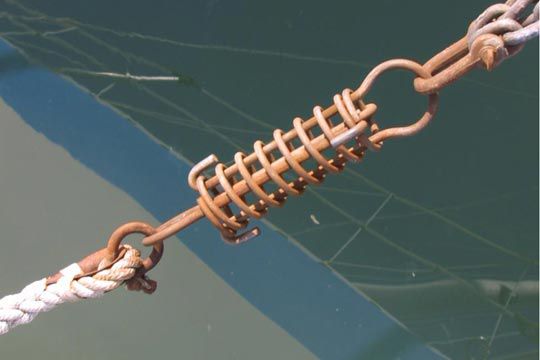
Galvanized protections are prohibited, because this process involves heating the steel to 450°C, which alters its elastic properties. The solution is still the cold electrolytically protected mooring dampers. It is a protection deposited by electrolysis in zinc baths.
The cadmium-plated mooring dampers (the springs come out with a gold colour) are based on the same principle (electrolysis), but provide more resistance to corrosion.
The stainless steel mooring dampers remain, the most resistant to corrosion. But this alloy is much less flexible than steel (it is even brittle). Moreover, this metal"squeaks" during operation, because the stainless steel to stainless steel friction tends to seize.
Noise is also a negative point of these spring models, a phenomenon that does not exist on rubber models.
Rubber shock absorbers
No spring for rubber shock absorbers, it is the winding of the rope around the body of the shock absorber which ensures the damping. With the rubber shock absorber commonly used, it is necessary to provide at least 2 turns (3 turns is better) for a good damping.
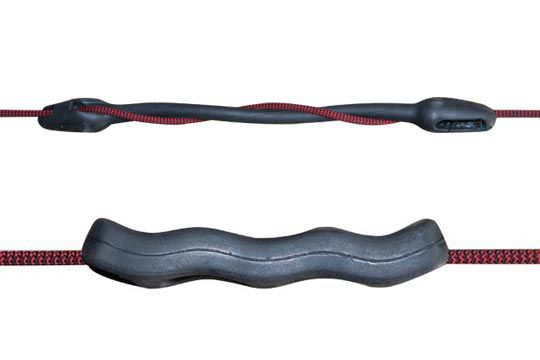
It is funny to note that when you pull very hard on the mooring line, it stretches in a straight line and the damper then wraps around it.
Be careful to choose the model with the whistle cleats at each end. These have a role at the moment of the tension of the mooring line (there are models without cleats, often cheaper, but also less powerful).
With the Milla rubber shock absorber, the rope passes through the shock absorber in several passages (between 6 and 8 holes depending on the model), but the principle remains the same.
A little less powerful than springs, rubber shock absorbers do not fear UV and corrosion and especially do not make any noise. A big plus to sleep peacefully in the harbor!

 /
/ 